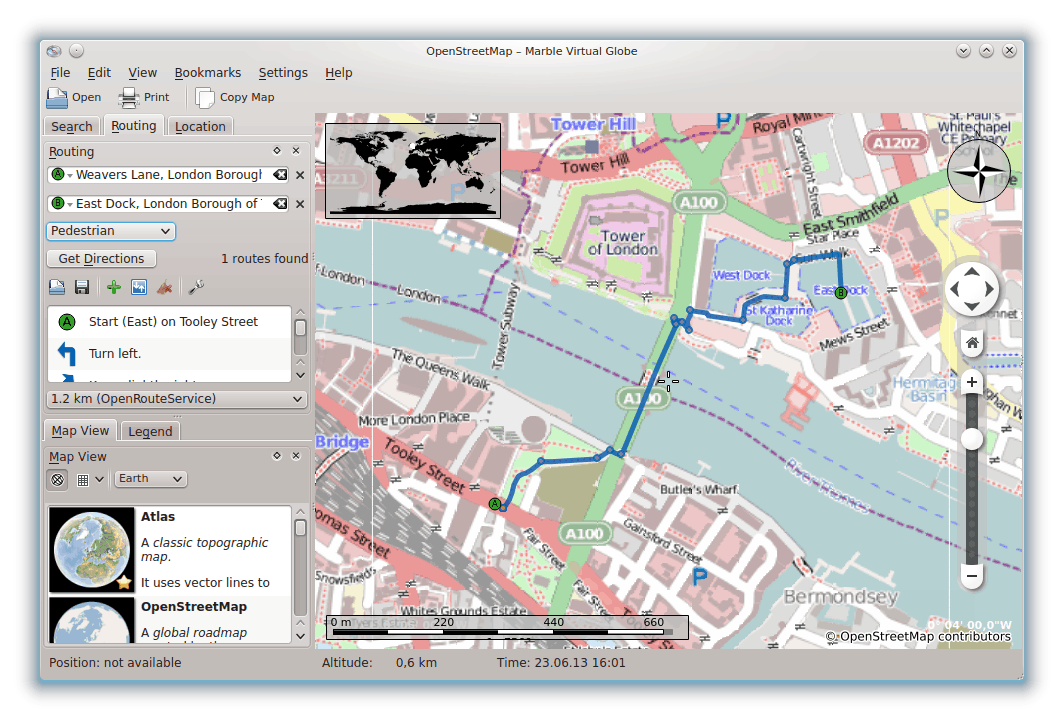Which route to choose depends on the type of vehicle you plan to use (if any). You can tell Marble about this and other preferences using route profiles. Each profile contains the settings for a certain routing scenario. On the first start, Marble creates four common profiles for you: Car (fastest), Car (shortest), Bike, and Pedestrian.
The examples in the previous sections used the Car (fastest) profile. Let's revisit the last route with a different profile: Select the Pedestrian option in the Profile combo box. The route now looks like this:

The proposed route has become shorter because footways are now also included when calculating the best route.
If you want to tweak one of the default profiles further, select it in the Profile combo box and click on the Configure link. A new window opens.

The left side lets you configure which routing backends are queried for routes. Eight or more backends are supported by Marble, some working online and the other ones working offline. Online routing requires an Internet connection to query a route. Offline routing works without an Internet connection, but requires you to download and install offline routing maps in advance. The supported routing backends are
CycleStreets: Bicycle routing for the United Kingdom using cyclestreets.net
Gosmore: An offline router that also serves as the backend for the Yours online router
MapQuest: An online router which provides advanced turn-by-turn instructions
Note
An AppKey is required for MapQuest routing to work. You can register the AppKey here.
Monav: An offline router that is very fast even when calculating very large routes
OSRM: An online router that is very fast even when calculating very large routes
OpenRouteService: An online router that also generates driving instructions, limited to Europe
Routino: An offline router with a very flexible configuration
Yours: An online router that operates world-wide, but lacks driving instructions
Once you select and enable a routing backend on the left to include it in routing queries, you can modify its settings on the right side. The settings are specific to each backend.
Besides configuring the four default profiles, you can add new profiles and remove existing ones in the Marble settings in the Routing page.